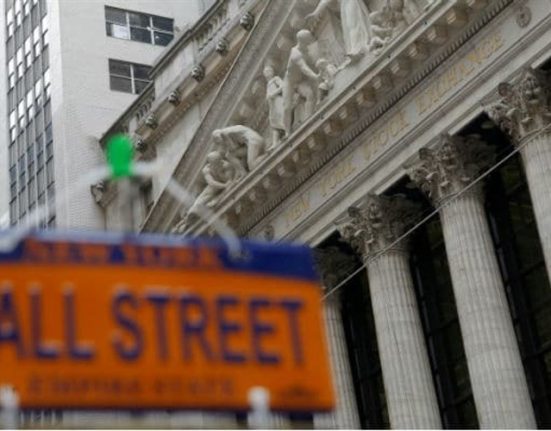Earlier this year, finance researcher Stewart Brown published a paper that featured a startling introduction:
There is a large financial anomaly hiding in plain sight. In 2021, investors paid almost $90 billion in total fees on about $14 trillion of actively managed mutual funds to an industry flogging a product demonstrably inferior to index funds. [Fellow researcher] Gruber identified this puzzle in 1996, and we are no closer now than we were then to understanding this mystery.
Image source: Getty Images.
Active vs. passive funds
It’s quite a problem, and a seemingly puzzling one, too. Let’s set the stage a bit: Know that there are two key kinds of mutual funds (and their close cousins, exchange-traded funds (ETFs) — actively managed ones and passively managed ones. An actively managed fund will be helmed by money managers who study the universe of possible investments and choose which ones to buy and sell and when to do so. Thus, shareholders are paying for their expertise.
Passively managed funds, on the other hand, include index funds, which simply hold whatever securities are in the index they track in similar proportions, thereby aiming to deliver roughly the same returns (less their fees, which tend to be quite low). So, an S&P 500 index fund, such as the Vanguard S&P 500 ETF (NYSEMKT: VOO), will get you nearly the same returns as the S&P 500 — which is quite respectable. The S&P 500 has averaged annual returns of close to 10% over many decades.
Just to get a sense of how powerful 10% annual gains — or even more conservative 8% annual gains — can be, check out the table below, which reflects the growth of $7,000 invested annually:
|
$7,000 invested annually and growing for |
Growing at 8% |
Growing at 10% |
|---|---|---|
|
10 years |
$109,518 |
$122,718 |
|
15 years |
$205,270 |
$244,648 |
|
20 years |
$345,960 |
$411,018 |
|
25 years |
$552,681 |
$757,272 |
|
30 years |
$856,421 |
$1,266,604 |
|
35 years |
$1,302,715 |
$2,086,888 |
|
40 years |
$1,958,467 |
$3,407,963 |
Source: Calculations by author.
If you can swing bigger annual investments, you can amass much more, even faster.
What’s the problem?
Not everyone understands the power of simple index-fund investing, though. Many investors are looking for above-average returns, but that can be hard to get. You might be looking for the next Nvidia or Apple stock, only to end up with a few clunkers. Or you might plow money into one or more managed mutual funds because they posted impressive returns recently, only to see later that those were anomalous.
The difficulty of beating the average is evident when you compare the returns of index funds to their managed counterparts. For example, according to the folks at S&P Dow Jones Indices, over the past 15 years, the S&P 500 index outperformed a whopping 88% of managed large-cap mutual funds, and it outperformed 87% over the past decade.
Given such results, it would make sense for most investors to just stick with index funds — which is also what Warren Buffett has recommended. Yet millions of us invest elsewhere, paying dearly in fees.
Fees matter
Fees are a big part of why index funds outperform managed funds. A good index fund (and there are many of them) will generally have very low fees. For example, the Vanguard S&P 500 ETF sports a tiny expense ratio (annual fee) of just 0.03%. So, if you have $10,000 invested in it, you’ll be paying only $3 per year in fees. Even an expense ratio of 0.10% will cost you just $10.
Managed funds, though, will generally charge significantly higher annual fees, in part because they have salaries to pay. An expense ratio of 1% or more is not unusual, and while it might not seem like a big deal, it can be. Imagine two funds, each returning 10% annually. One charges 0.10% and the other 1.00%. Their returns will shrink to 9.9% and 9%, respectively. Here’s how annual investments of $10,000 would grow over time at those rates:
|
Over this period… |
Growing at 9% |
Growing at 9.9% |
|---|---|---|
|
10 years |
$165,603 |
$174,315 |
|
20 years |
$557,645 |
$662,348 |
|
30 years |
$1,485,752 |
$1,773,911 |
Source: Calculations by author.
See? Fees can really make a difference.
So, go ahead and invest in funds charging 1% or more per year — but if you do so, be aware of what it’s costing you. You should be fairly confident that the fund is likely to outperform enough to make up for its fees. If you don’t want to spend much time thinking about it and trying to beat the averages, just stick with getting average results — they’ve really been quite good over most long periods.
Selena Maranjian has positions in Apple and Nvidia. The Motley Fool has positions in and recommends Apple, Nvidia, and Vanguard S&P 500 ETF. The Motley Fool has a disclosure policy.







